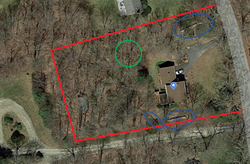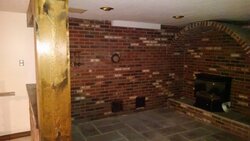Ok, so I need help. Last year was our first year with a stove, and we loved it. We burned about 4 cords, and plan on doing the same each year.
As predicted by all seasoned hearth.com members, the hardest part by far was finding seasoned wood. After lots of Craigslist searching, we were able to find five truly seasoned cords of wood sold by two homeowners. However, all of the stuff I have scrounged as well as stuff I bought from a firewood dealer were not remotely ready to burn last year.
I have tried to follow good wood drying practices – I stack on pallets which are up on cinder blocks, and I plan on top covering everything 24 months before the season it’s burned. We are also getting ahead. My goal is to have 16 cords CSS by the beginning of this season. We will burn four cords a season, and so each season we should have wood that has been CSS for three years.
Here’s the problem I am having: All of my wood, even the stuff that has been top covered for 18 months (starting immediately after it was split and stacked) has mushrooms growing on it. I haven’t checked wood with the moisture meter yet – I plan on doing that this weekend when I move the first cord into the garage. But if it has mushrooms growing on it, my guess is that it’s not at 21% moisture…
Our property gets very little sun. I know that a lot of other people on here don’t even need to top cover, and many that do cover do fine as well. However, I’m concluding that in our case, we need to ensure that the wood does not get wet at all. Even the tiniest bit. I would think that that requires either a much fancier top cover than a tarp – something that gives a significant overhang, or a wood shed.
Has anyone else concluded for their climate/property that they simply can’t get wood dry enough without a wood shed? Does anyone else stack wood on pallets, and have a better way to top cover that keeps the wood 100% dry?
As predicted by all seasoned hearth.com members, the hardest part by far was finding seasoned wood. After lots of Craigslist searching, we were able to find five truly seasoned cords of wood sold by two homeowners. However, all of the stuff I have scrounged as well as stuff I bought from a firewood dealer were not remotely ready to burn last year.
I have tried to follow good wood drying practices – I stack on pallets which are up on cinder blocks, and I plan on top covering everything 24 months before the season it’s burned. We are also getting ahead. My goal is to have 16 cords CSS by the beginning of this season. We will burn four cords a season, and so each season we should have wood that has been CSS for three years.
Here’s the problem I am having: All of my wood, even the stuff that has been top covered for 18 months (starting immediately after it was split and stacked) has mushrooms growing on it. I haven’t checked wood with the moisture meter yet – I plan on doing that this weekend when I move the first cord into the garage. But if it has mushrooms growing on it, my guess is that it’s not at 21% moisture…
Our property gets very little sun. I know that a lot of other people on here don’t even need to top cover, and many that do cover do fine as well. However, I’m concluding that in our case, we need to ensure that the wood does not get wet at all. Even the tiniest bit. I would think that that requires either a much fancier top cover than a tarp – something that gives a significant overhang, or a wood shed.
Has anyone else concluded for their climate/property that they simply can’t get wood dry enough without a wood shed? Does anyone else stack wood on pallets, and have a better way to top cover that keeps the wood 100% dry?




